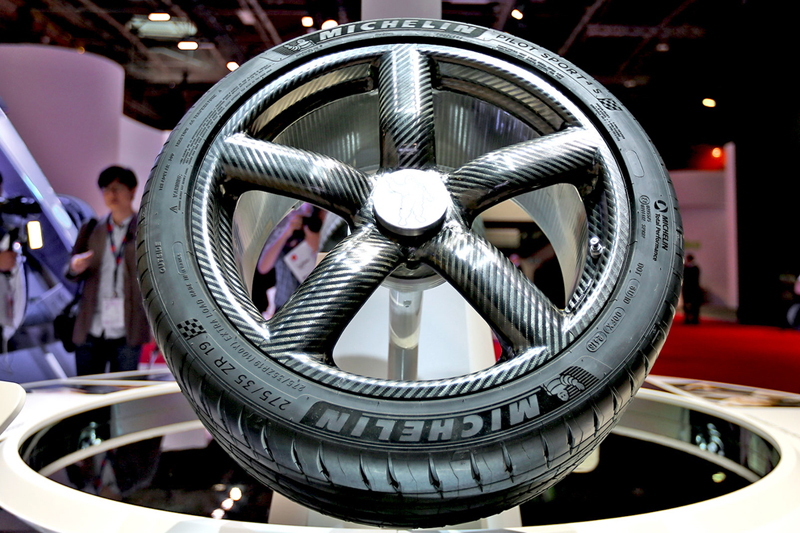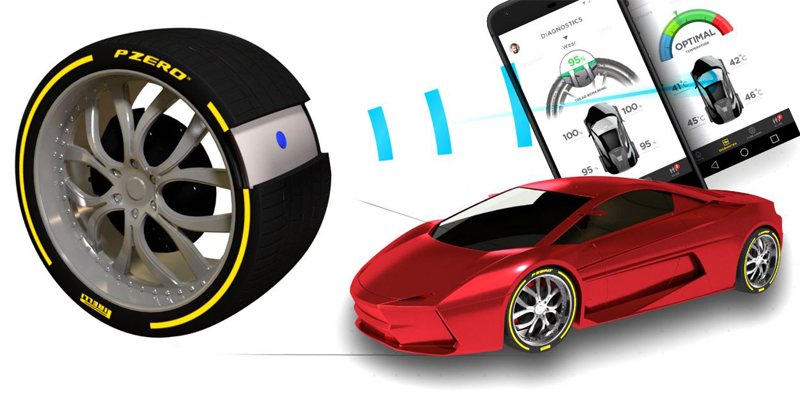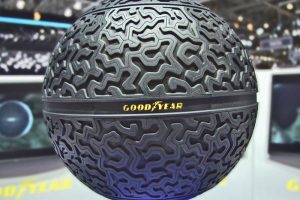Jonathan Sampson, of AutoMate, takes a closer look at the very latest innovations in tyre design on display at the 2017 Geneva Motor Show.
This years Geneva Motorshow was a powerful display of the car world’s ability to out-do itself year after year, with innovations in everything from high-performance drivetrains to the very latest in cutting-edge driver assistance systems and finely-honed suspension technology.
But here’s the thing: in the end, all of that mechanical innovation and all that power is filtered down to the road by just four strips of rubber, whose actual contact patches barely cover a few sheets of A4 paper.
The depth of engineering that lurks beneath the rubber band these days speaks volumes about just how much a good, or a bad, tyre can affect how the car steers, brakes, rides, sounds and handles.
But of course these days, as with everything, the very latest tyre concepts are beginning to touch the outer stratosphere of mechanical witchcraft. With that in mind, we thought we’d take a look at some of the new concepts previewed at this year’s Geneva Motor Show, starting with what many consider the peak of the traditional market right now, and then moving through to what we could expect to see in the coming years.
Today’s tyre design
Any peek into the world of tyre design right now would be incomplete without the inclusion of Michelin. More specifically, it’s the company’s very latest flagship tyre that’s been garnering all the attention in the industry, and for good reason. Called the Pilot Sport 4 S, it’s the replacement for the very successful Pilot Super Sport, a design that sat right up there at the peak of the summer road tyre market. Now though, the new PS4 S is out to go at least one better, and its inclusion in this review should be an indication as to just how important this tyre is to a whole range of automakers.

How important? Well, wandering around the halls at the Geneva Motor Show this year, it didn’t take much looking to notice just how many of the car industry’s finest new creations were sitting four square on Michelin PS4 S tyres. Ferrari’s quirky, 601bhp four-seater, the GTC4Lusso, found itself strapped in with a full set. Then there was a whole swathe of BMW sports sedans running the tyre, including the 340i M-Sport and the top dog M3/M4 series. And don’t forget Mercedes- AMG – the manufacturer chose the PS4 S as the rubber for one of the car world’s great models: the maniacal GT supercar.
So what makes this tyre such a drawcard for all these boutique brands and their high- performance models? In essence, the PS4 S represents a steady upgrade from its predecessor in all areas, including in its compound design. Michelin has worked wonders by finely blending two separate hard
and soft compounds into the tyre, so the inside half of the tyre is tuned for better wet grip, while the outside half brings increased traction in the dry. This whole inside-out concept works on the assumption that there won’t be a lot of high-lateral g-forces on the outside of the tyre in wet conditions, so the inside half is designed to generate more of the grip when the roads get slippery.
Different tread-blocks across the tyre also help to minimise compromise between wet and dry road performance, using far fewer rain channels on the outer-half of the tyre, and a thicker ‘shoulder’ of tread, to create something of the performance of a semi-slick tyre under high lateral loads.
All of this equates to what is shaping up to be the top dog of the performance road-car market – and with car makers now pushing up against, and beyond, 600bhp in road car models, it’s this sort of sophisticated tyre engineering that will keep our road-bound missiles straight and true, no matter the conditions.
Smart phone, smart watch… smart tyre?
If the Michelin tyre is the peak of the ‘right now’, then the Geneva Motor Show also threw up some interesting indications of what the ‘tomorrow’ for tyre engineering could look like. Both of Michelin’s greatest competitors used Geneva to preview their next generation of ‘smart tyres’ – designs which use levels of digital integration to monitor all sorts of parameters about the tyres’ performance.

Pirelli’s Connesso was one such design. Using a sensor mounted inside the tyre tread, it communicates with a smartphone app to provide real time information about what’s going on underneath you. That means you’ll be able to monitor the instantaneous temperatures and pressures of your Pirellis, and those numbers allow the app to calculate the wear rate of each tyre and therefore when you’ll be up for replacement.
This idea has particular relevance for the fleet market, on the basis that managers will have the ability to accurately foresee when vehicles are approaching tyre-swap time, and as a result, Pirelli predicts this system will help minimise downtime because it allows for a better co-ordination of inventory ordering with vehicle maintenance cycles.
Goodyear, on the other hand, is pushing the boundaries even further with its IntelliGrip system. The tread-mounted sensor is powered by a piezo-electric generator, which squeezes a piezo crystal and sends out an electron signal that varies with the tyre deflection. The result is that not only can the Goodyear calculate actual temperatures and pressures, but also tyre wear and even the available amount of friction on the road surface.
That last feature has the potential to be a particularly powerful tool for automakers, as in time it could be developed further to improve the car’s ‘knowledge’ of what sort of surface it’s travelling over, and therefore enhance the operation of ESP and ABS systems, and eventually semi-autonomous drive pilots too. To that end, Goodyear has teamed up with Tesla to fit the tyres to some of the cars in the semi-autonomous ride sharing service, Tesloop, with a view to testing how useful this technology would be for future fleets of driverless automobiles.

And of course, if these ‘smart tyres’ still don’t quite float your boat, then Goodyear had one final trick up its sleeve at Geneva: the Eagle 360 Urban Spherical Tyre. This mad design concept is as futuristic as it is improbable right now, but it’s nevertheless an interesting peek into the deep future of tyre development. Using artificial intelligence and a bionic skin, the tyre is able to adapt the tread surface to the road conditions by moving little dimples in and out in wet or dry conditions, and it uses a centre-mounted permanent magnet so the whole body of the tyre levitates around its core.
A pipe-dream? Sure, but then we have to remember that even today’s tyres are comparatively miraculous compared to their predecessors from 50 years ago. And with that in mind, one can only imagine what sort of miracle fruit the next 50 years of tyre development could bear.










